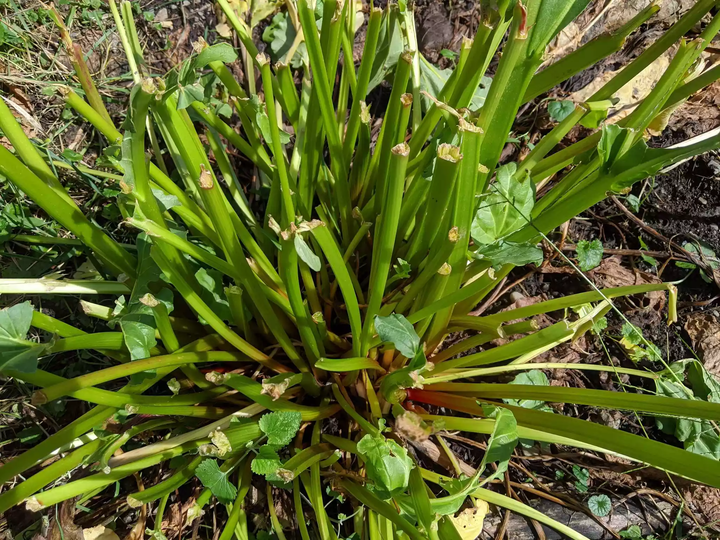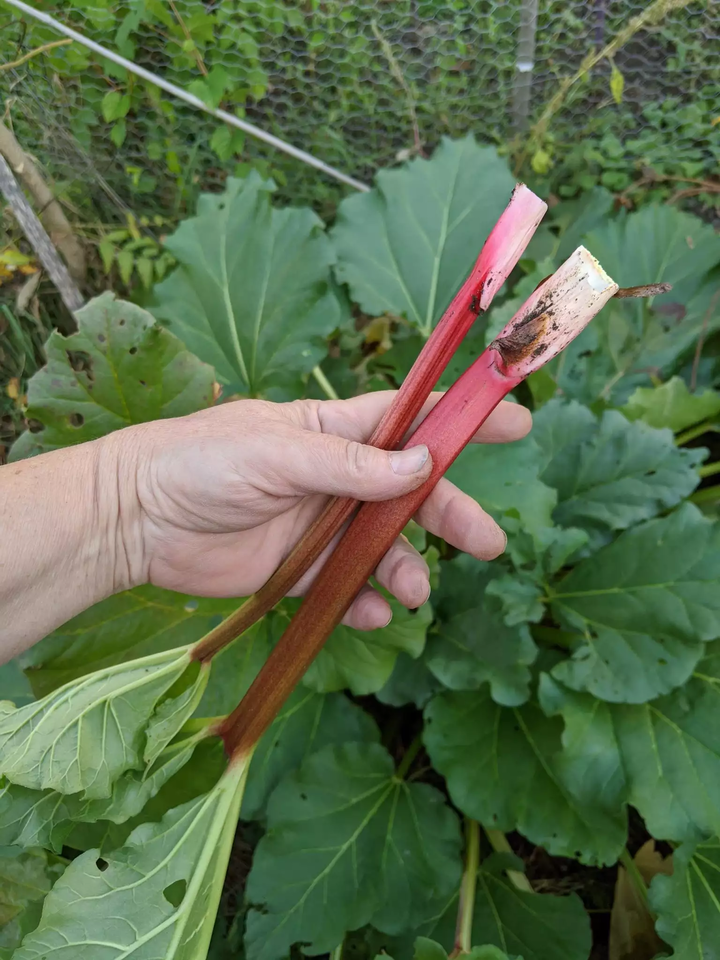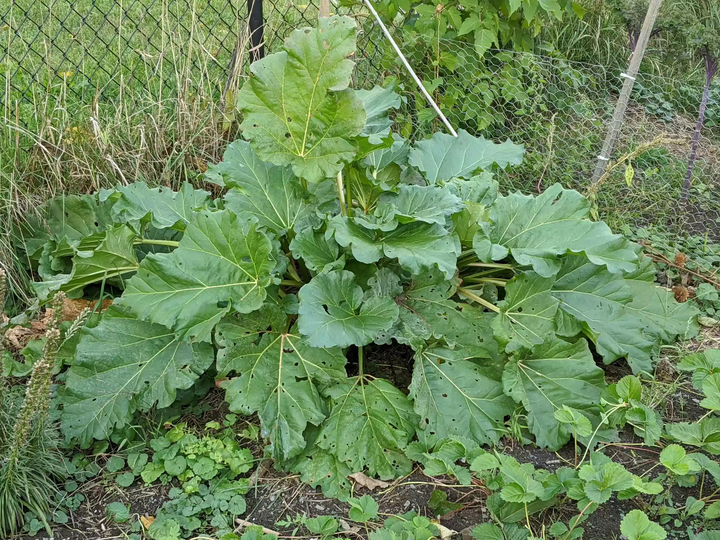Rhubarb is a well-loved garden plant that many people associate with old-fashioned foods our grandparents ate, like pickled rhubarb or strawberry rhubarb pie. The bright pink-crimson stalks and the huge ruffled leaves also make it an attractive and dramatic planting in the vegetable garden. It stays green and vibrant from spring through autumn and can be harvested all season long. As a perennial, the emergence of its curly leaves are a welcome sight in spring when many garden crops have to wait until after the last frost for sowing. This article will offer some tips on picking, to make the most of your rhubarb harvest.
When to Harvest Rhubarb
Rhubarb is commonly thought of as a plant to be harvested in late spring, and this is possibly due to the popularity of its use in dishes made with strawberries. Strawberries also begin ripening in mid to late June, and the two are prepared together in things like strawberry-rhubarb pie, or strawberry-rhubarb jam. But rhubarb can actually be picked through the middle of autumn and right up until you put your garden to bed for the season. You can also plant rhubarb in early spring and harvest it within a few weeks!

If the deer, woodchucks or other critters have gotten to your rhubarb, don't worry; they tend to only munch the leaves, and will leave the stems for you! But be sure to wash them thoroughly and cut off the chewed end, to avoid contracting any illness via animal saliva. Rinse the stems in a bucket or sink full of water with a drop or two of hydrogen peroxide or vinegar, as an extra precaution.
Is Your Rhubarb Ready to Harvest?
Rhubarb should not be harvested in the first year of planting; the leaves will nourish the roots to establish a good healthy plant. But in the second year, your rhubarb will be ready to harvest. Picking rhubarb is fairly simple: just gently grab each stalk at the base and twist it slightly while gently pulling it. If it won't yield to gentle tugging, you can gut it with garden shears.
If you're harvesting for commercial use or sale, wear gloves while harvesting your stalks, because the oil from your fingers can sometimes leave a purple bruise-like mark on the red stalks. This doesn't affect eating quality at all, though, so home gardeners need not wear gloves.

Some rhubarb varieties have green stems, and these are perfectly edible. But most people prefer the red-stemmed varieties, both for their looks and their tart, distinctive taste. If you have red-stemmed rhubarb, wait until the color is bright before picking. If the stems are not completely red, but show at least some red, that's fine. The stems should be firm; if you wait too long to harvest the stems may get tough. And of course, NEVER eat the leaves of rhubarb as they are toxic. They can be used to make your own organic pesticide.
If you're storing your rhubarb in the fridge for a few days before eating it, leave a bit of the leaf intact as this helps retain moisture. Then, cut the leaf end of the stalks (about two inches) before preparing them for cooking. If you're freezing or canning, prepare your rhubarb as soon as possible after harvesting, and cut the leaf end off.
Rhubarb vs. Pests

Many gardeners love rhubarb in the garden for its majestic form and bold colors. Some folks don't even eat it but consider it an ornamental plant. However, sometimes it can damaged by pests that chew small holes in the leaves, making it somewhat unsightly. These pests don't tend to do too much damage. They definitely won't affect your rhubarb harvest; even if these insects nibble on the stalks, just cut away the affected portion and enjoy your rhubarb harvest.
Harvest Every 4-5 Weeks
Your rhubarb will continue growing after you harvest; you should wait four to five weeks after harvesting before you pick rhubarb stalks again; this will allow you about three crop harvests during the season. You'll want to leave about a third of the developed stalks each time you harvest your plant to keep the plant producing in a healthy way. But at your final harvest, before putting the garden to bed, cut all the stalks back to avoid having rotting leaves on your rhubarb plant, as they may affect the crown of the plant. It's a good idea to divide rhubarb every five years or so, and this can be done most effectively in the fall.
You can still harvest rhubarb stalks after a frost, but only if them stems are still firm. If they seem to be soft or mushy, don't eat them; the toxicity from the leaves could possibly migrate to the stalks when they are damaged by the cold. If you have any doubts as to the impact of a frost, it's best not to eat the rhubarb. At that point, cut back the entire plant for the season.
Avoid Letting Rhubarb Go to Seed
Letting your rhubarb go to seed in spring offers some tasty food for pollinators. But it's best to avoid allowing rhubarb to bolt, because at that point your plant won't produce stems for the season. If an unusually warm spring does cause your rhubarb to bolt early, trim off the flowers and enjoy your handsome plant, but wait until next year to resume harvesting.